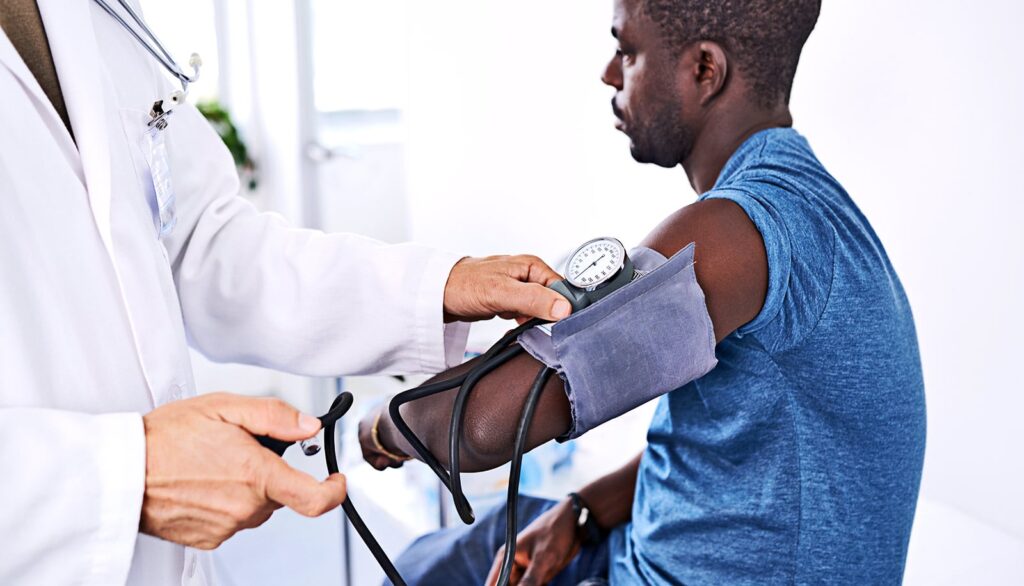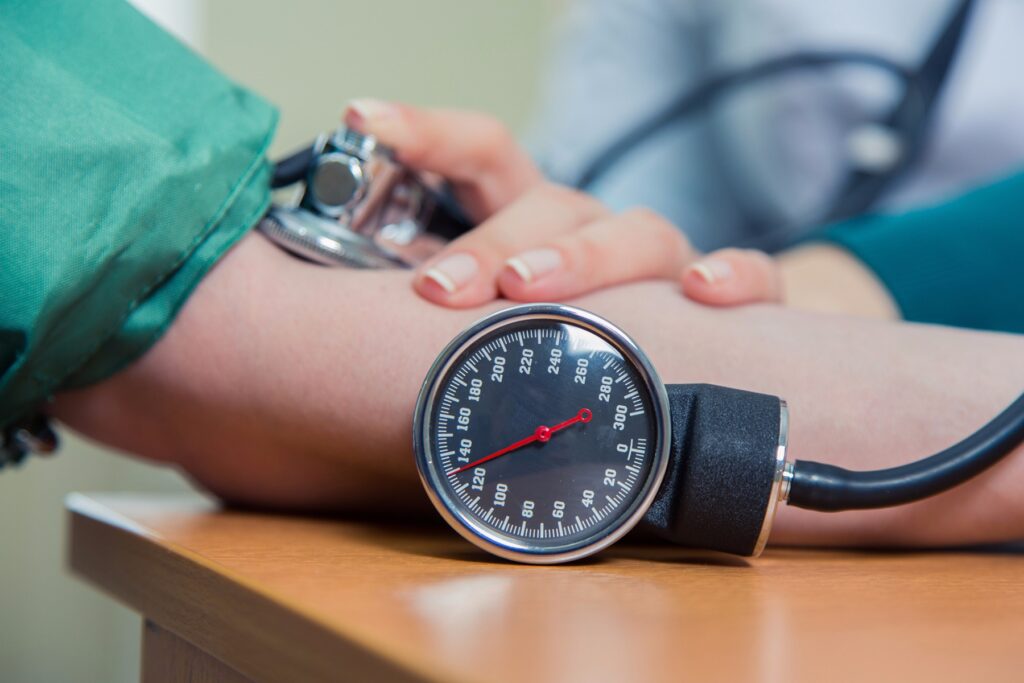Introduction
How Is Blood Pressure In The Body Affected By Exercise: Blood pressure is far more than a mere set of numbers; it is a vital indicator of cardiovascular health and overall well-being. It reflects the force with which blood surges through the arteries, delivering oxygen and nutrients to every cell in the body. Maintaining optimal blood pressure is essential for the prevention of heart disease, stroke, and numerous other health complications.
Exercise is an agent of change, a dynamic force that transforms the body on multiple levels. Its impact on blood pressure is multifaceted, encompassing both immediate responses and long-term adaptations. Understanding this impact is crucial for individuals seeking to harness the benefits of exercise in optimizing their cardiovascular health.
When one engages in physical activity, the body responds swiftly. Heart rate increases, and the arteries expand, allowing more blood to flow. These immediate effects, known as acute responses, cause a temporary rise in blood pressure. While this might sound counterintuitive to the concept of exercise promoting heart health, it is a normal and beneficial aspect of physical activity.

How is blood pressure in the body affected by exercise brainly?
Expert-Verified Answer
The blood pressure in the body is affected by exercise due to the systolic pressure increases, whereas the diastolic pressure remains constant (Option C). Blood pressure is determined both by the force of the blood pushing against the walls of the arteries and the amount of blood the heart pumps.
Increased Heart Rate: Exercise stimulates the heart to beat faster. This elevated heart rate leads to an increase in cardiac output, which is the amount of blood the heart pumps with each beat. Consequently, blood pressure rises during exercise to supply the working muscles with more oxygen and nutrients.
Vasodilation: During exercise, blood vessels, particularly the arterioles, widen or dilate. This vasodilation allows more blood to flow through the vessels, reducing resistance. As a result, the pressure on the vessel walls decreases, helping to offset the increase in blood pressure from the elevated heart rate.
Short-Term Blood Pressure Spike: As an immediate response to exercise, there is a temporary spike in blood pressure. This is a healthy and expected reaction to the increased physical demand and is not a cause for concern. After you stop exercising, blood pressure typically returns to its baseline levels.
How is blood pressure in the body affected by exercise quizlet?
Systolic blood pressure increases linearly with exercise intensity and diastolic pressure remains stable or decreases slightly at the higher exercise levels.
Reduced Resting Blood Pressure: Regular exercise, especially when done consistently over time, can lead to a lower resting blood pressure. This effect is primarily attributed to long-term adaptations in the cardiovascular system. Regular exercise improves the efficiency of the heart, making it more capable of pumping blood with less effort. It also enhances the flexibility and function of blood vessels, reducing overall resistance to blood flow.
Weight Management: Exercise can help with weight management, which, in turn, contributes to lower blood pressure. Maintaining a healthy weight reduces the workload on the heart and minimizes the risk of developing high blood pressure.
Improved Endothelial Function: Exercise enhances the function of the endothelium, the inner lining of blood vessels. Healthy endothelial function is crucial for maintaining optimal blood pressure and preventing the development of atherosclerosis (narrowing of the arteries).
Stress Reduction: Exercise is known to reduce stress and enhance mental well-being. High stress levels can contribute to elevated blood pressure, and exercise helps mitigate this effect.
What happens to blood pressure directly after exercise?
Blood pressure after exercise can increase and sometimes even decrease from the optimal 120 over 80 mm Hg. This is perfectly normal and usually nothing to worry about.
Vasodilation: Simultaneously, blood vessels, particularly the arterioles, dilate or widen in response to the physical demands of exercise. This vasodilation allows more blood to flow through the vessels, reducing overall resistance. The dilation of blood vessels helps to offset the increase in blood pressure caused by the elevated heart rate.
Temporary Blood Pressure Spike: The immediate effect of exercise is a temporary spike in blood pressure. This is a normal and healthy response to the body’s increased demand for oxygen and nutrients during physical activity. The magnitude of the increase can vary depending on the intensity and duration of the exercise.
Blood Pressure Normalization: After you stop exercising, blood pressure typically returns to its baseline levels relatively quickly. The rate at which it returns to normal can vary among individuals and is influenced by factors such as fitness level and the intensity of the exercise.
Does exercise bring down blood pressure?
Exercise can also help keep elevated blood pressure from turning into high blood pressure (hypertension). For those who have hypertension, regular physical activity can bring blood pressure down to safer levels.
Reduction in Resting Blood Pressure: Regular physical activity, such as aerobic exercises like brisk walking, jogging, swimming, and cycling, can lead to a decrease in resting blood pressure over time. This effect is often more pronounced for individuals with high blood pressure (hypertension).
Improvement in Cardiovascular Health: Exercise enhances the efficiency of the heart, making it more effective in pumping blood with each beat. This reduces the workload on the heart and results in a decrease in both systolic (the higher number) and diastolic (the lower number) blood pressure.
Enhanced Blood Vessel Function: Exercise contributes to improved endothelial function, which is the health of the inner lining of blood vessels. Healthy endothelium is better at regulating blood flow and maintaining optimal blood pressure.
Weight Management: Regular physical activity plays a crucial role in weight management. Maintaining a healthy weight or losing excess weight can lead to a reduction in blood pressure. Excess body weight can increase the pressure on the walls of blood vessels, contributing to hypertension.
What is the effect of exercise on blood pressure?
Similarly, in healthy individuals the response of the diastolic pressure to ‘dynamic’ exercise (e.g. walking, running or jogging) of moderate intensity is to remain constant or to fall slightly (due to the improved blood flow), but in some individuals a rise of 10 mmHg or greater is found.
Immediate Increase During Exercise: When you engage in physical activity, there is an immediate and temporary increase in blood pressure. This is a normal response to the increased demand for oxygen and nutrients by the working muscles. Both systolic (the higher number) and diastolic (the lower number) blood pressure may rise during exercise.
Stress Reduction: Exercise is known to reduce stress and improve mental well-being. High stress levels can contribute to elevated blood pressure, and exercise can help mitigate this effect.
Blood Sugar Regulation: Regular exercise improves insulin sensitivity, which can help regulate blood sugar levels. High blood sugar levels are associated with hypertension, and exercise can have a positive impact on both blood pressure and blood sugar control.
Enhanced Cardiovascular Health: Exercise benefits the overall health of the cardiovascular system, reducing the risk of cardiovascular diseases, including hypertension.
How is blood pressure and heart rate affected by exercise?
During exercise, increases in cardiac stroke volume and heart rate raise cardiac output, which coupled with a transient increase in systemic vascular resistance, elevate mean arterial blood pressure (60). However, long-term exercise can promote a net reduction in blood pressure at rest.
When you engage in physical activity, there is an immediate and temporary increase in blood pressure. This is due to the body’s increased demand for oxygen and nutrients by the working muscles. During exercise, the heart pumps blood more forcefully, leading to a higher systolic (the higher number) blood pressure.
Simultaneously, blood vessels, particularly the arterioles, dilate or widen in response to the physical demands of exercise. This vasodilation allows more blood to flow through the vessels, reducing resistance. The dilation of blood vessels helps to offset the increase in blood pressure caused by the elevated heart rate.
The immediate effect of exercise is a temporary spike in blood pressure. This is a healthy and expected response to the increased physical demand and is not a cause for concern. After you stop exercising, blood pressure typically returns to its baseline levels relatively quickly.
What is the best exercise for high blood pressure?
Performing wall squats (isometric exercise) was most effective for reducing systolic pressure, and running (aerobic exercise) was most beneficial for decreasing diastolic pressure, but isometric exercise overall was best for lowering both pressure elements.
Brisk Walking: Walking is a low-impact, accessible exercise that can be easily incorporated into your daily routine. Aim for brisk walking, where your heart rate and breathing increase but you can still hold a conversation. Walking for at least 30 minutes on most days of the week can be beneficial.
Cycling: Riding a bike, whether outdoors or on a stationary bike, is an excellent aerobic exercise that is gentle on the joints. It helps improve cardiovascular fitness and can help lower blood pressure.
Swimming: Swimming is a whole-body workout that is easy on the joints. It promotes cardiovascular health and can be a great choice for individuals with hypertension.
Aerobic Dancing: Aerobic dance classes, like Zumba or other dance-based fitness programs, offer a fun way to improve cardiovascular fitness and manage blood pressure.
How long does exercise affect BP?
The Centers for Disease Control and Prevention (CDC) recommends waiting for at least 30 minutes after you exercise to take a reading and resting for 5 minutes right beforehand. But it can take a couple of hours after exercise for your blood pressure to return to its typical level.
Lowering Blood Pressure: Regular exercise, especially aerobic exercise (such as walking, running, cycling, and swimming), has been shown to have a long-term effect on reducing blood pressure. Over time, consistent exercise can help lower both systolic (the top number) and diastolic (the bottom number) blood pressure.
Reduced Risk of Hypertension: Engaging in regular physical activity can reduce the risk of developing hypertension (high blood pressure) in the first place. It can also help individuals with hypertension better manage their condition.
Improved Blood Vessel Function: Exercise can improve the elasticity of blood vessels and enhance their ability to dilate, which can contribute to better blood pressure regulation.

Conclusion
Exercise’s immediate effects on blood pressure are marked by a temporary increase, which is a consequence of the body’s heightened demand for oxygen and nutrients during physical activity. While this might raise concerns for some, these acute responses are not only normal but also beneficial. They reflect the body’s ability to adapt and meet the demands of exercise, making it more efficient in the long run.
The true power of exercise emerges in the long-term adaptations it instigates. Regular physical activity, when pursued consistently and appropriately, leads to reduced resting blood pressure, improved vascular function, and enhanced cardiac output. These adaptations lessen the burden on the heart and arteries, contributing to overall cardiovascular health.
One of the critical insights we’ve gleaned is that the type, intensity, and duration of exercise play a pivotal role in determining the extent of blood pressure changes. Individual variability, driven by factors like genetics and age, underscores the importance of personalized exercise regimens. Tailoring exercise to individual needs and health conditions is paramount for safe and effective blood pressure management.




